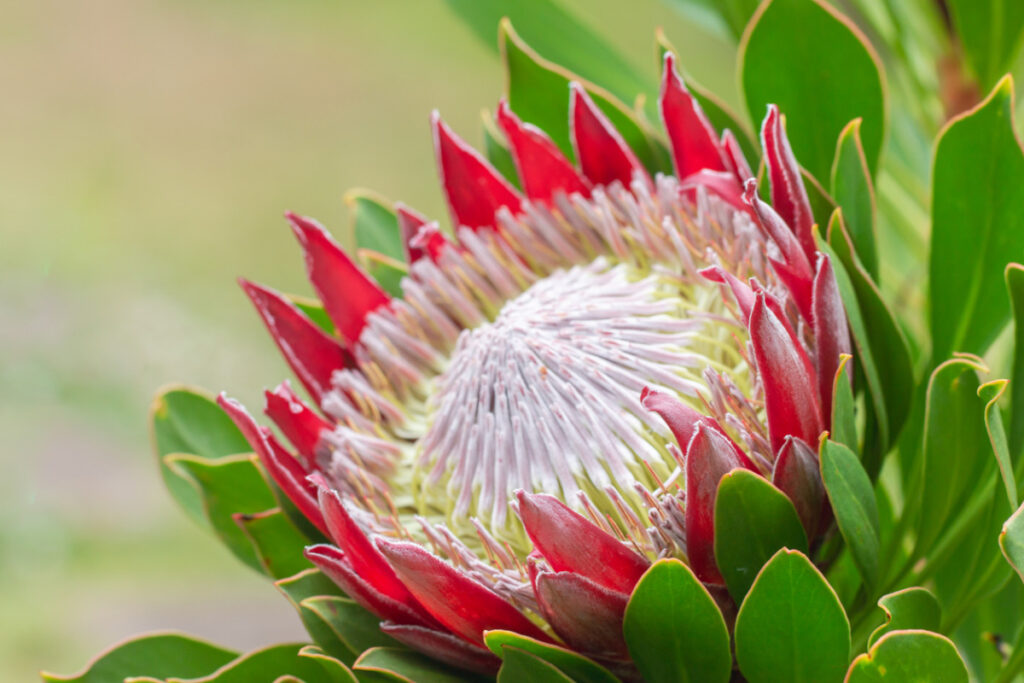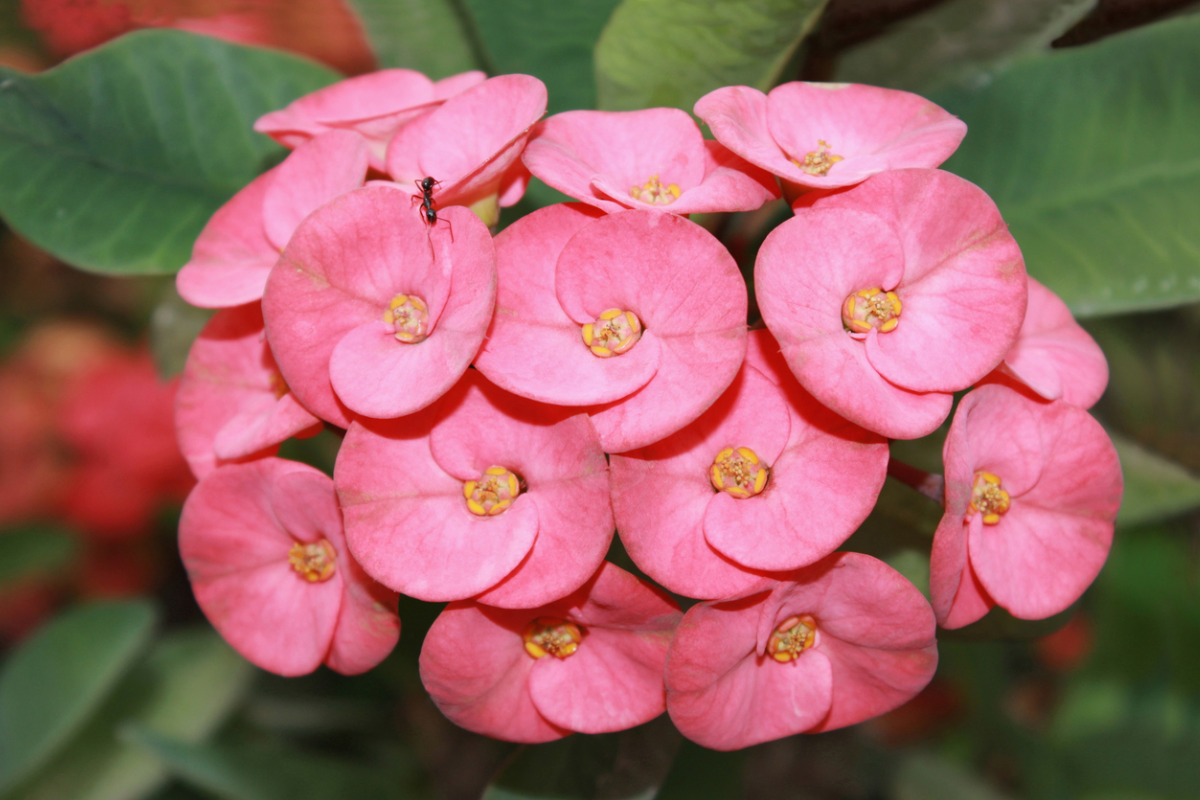If you’re seeking a touch of uniqueness and intrigue for your garden, look no further than flowers that start with the letter K. These flowers possess an exotic allure that adds a special charm to any landscape. Join us on a botanical adventure as we discover some extraordinary flowers that begin with K, including the vibrant Kangaroo Paw and the delightful Kaffir Lily. Get ready to be inspired by the beauty and diversity that these K-starting flowers bring to the table.

Key Takeaways
- Flowers beginning with K bring individuality and beauty to gardens and floral arrangements.
- Notable K-starting flowers include the vivid Kaffir Lily, the tropical Kalanchoe, the eye-catching Kangaroo Paw, and the stunning Keli Flower.
- These flowers offer a wide range of colors, shapes, and sizes, making them ideal for adding variety and vibrancy to your garden.
- K-starting flowers are typically low-maintenance and resilient, thriving in various climates and soil conditions.
The Wonder of K-Starting Flowers

K-starting flowers are a treasure trove of beauty and diversity, offering a unique touch to any garden or floral display. From the vibrant Kaffir Lily to the tropical Kalanchoe, these flowers captivate with their colors, shapes, and sizes. Let’s explore some intriguing examples that add depth and variety to the world of flowers beginning with K.
300 FLOWER NAMES IN ENGLISH WITH PICTURES THAT YOU MAY FIND IN YOUR GARDEN
Kaffir Lily (Clivia Miniata)
The Kaffir Lily, scientifically known as Clivia Miniata, is an exquisite flower that begins with the letter K. Native to South Africa, it has gained global popularity for its vibrant colors and ease of care. This captivating flower adds a splash of radiance to gardens, showcasing a range of hues from orange and red to pure white. As a member of the Amaryllidaceae family, the Kaffir Lily is an excellent choice for both beginner gardeners and seasoned enthusiasts due to its hardy nature and straightforward maintenance requirements.
Kalanchoe (Kalanchoe sp.)
Kalanchoe, a tropical succulent with warm-hued flowers, stands out as an eye-catching addition to any garden. Originating from Madagascar, this member of the Crassulaceae family boasts vibrant blooms in white, pink, yellow, orange, and red. Apart from its aesthetic appeal, Kalanchoe is highly valued for its low-maintenance nature and resilience in warmer climates. These plants not only flourish outdoors but have also become popular in indoor gardening, brightening up spaces with their long-lasting flowers.
Kalmia (Kalmia latifolia)
Kalmia latifolia, also known as American Laurel or Calico Bush, is a flowering shrub native to the northeastern United States. With its vivid blooms in white, pink, lavender, and purple, Kalmia transforms gardens into a tapestry of colors during the summer months. This low-maintenance plant thrives in acidic soil conditions, attracting pollinators such as bees and butterflies while adding aesthetic appeal to landscapes. Incorporating Kalmia latifolia into your gardening project brings vibrant colors and lively interactions throughout the summer season.
Kangaroo Paw (Anigozanthos sp.)
Prepare to be enchanted by the Kangaroo Paw, a flower that captivates with its striking resemblance to a kangaroo’s paw. Native to Australia, this colorful flower is widely cultivated for its eye-catching appearance in shades of red, orange, yellow, and green. The Kangaroo Paw not only attracts birds and bees with its bright petals and nectar-rich flowers but also thrives in well-drained soil and full sun. With its tall stature and long strap-like leaves, it adds both visual appeal and low-maintenance beauty to gardens and landscapes.
Keli Flower (Canna spp.)
The Keli Flower, scientifically known as Canna spp., is a stunning addition to any garden or landscape. With its impressive height of up to six feet, it commands attention and adds vertical interest. The Keli Flower stands out with its large and vibrant blooms, available in eye-catching colors such as orange, red, yellow, and pink. Blooming in the fall or early summer, this flower injects a splash of color into the landscape. With its simple growth requirements, the Keli Flower is an excellent choice for gardeners of all skill levels, attracting pollinators and providing captivating floral displays.
More Intriguing K-Starting Flowers

In addition to the Kaffir Lily, Kalanchoe, Kalmia, Kangaroo Paw, and Keli Flower, there are several other fascinating flowers that begin with the letter K. Let’s explore these captivating blooms that will bring even more charm to your garden and landscape.
16 Perennial flowers you should grow from seeds. This is why!
King Protea (Protea Cynaroides)
King Protea, scientifically known as Protea Cynaroides, holds the esteemed title of South Africa’s national flower. This bushy shrub boasts thick stems that reach impressive heights of over 17 inches. What truly sets King Protea apart is its striking appearance, with hard, oblong pink petals that captivate both gardeners and floral enthusiasts alike.
Thriving in well-drained soil and under the warm embrace of full sun, King Protea is renowned for its captivating presence in gardens and landscapes. Its large-sized blooms can last for several weeks, making it a popular choice for stunning floral arrangements and bouquets. As a symbol of beauty, strength, and resilience, King Protea holds a special place not only in South African culture but also in the hearts of flower enthusiasts worldwide.
Kiss Me Not Plant (Euphorbia Milii)
Prepare to be intrigued by the Kiss Me Not Plant, scientifically known as Euphorbia Milii. This flower, also known as Crown of Thorns, blooms from early spring to summer, injecting vibrant energy into gardens and landscapes with its thorny stems and clusters of red, petal-like flowers.
Standing tall at over 17 inches, the Kiss Me Not Plant boasts spiky green stems and blooms that demand attention. Originating from Madagascar but now cultivated across the globe, this plant is known for its exceptional hardiness and ability to thrive in various climates and soil conditions. With its drought tolerance and irresistible charm for pollinators like bees and butterflies, it’s an excellent choice for adding natural beauty to any outdoor space. Whether you’re an experienced gardener or a novice, this low-maintenance plant offers a unique opportunity to create captivating floral displays.
King’s Mantle (Thunbergia Erecta)
Meet the King’s Mantle, scientifically known as Thunbergia Erecta. This eye-catching flowering shrub, native to tropical Africa and Asia, enchants with its bluish-purple flowers featuring a sunny yellow center. During the summer months, King’s Mantle adds a vibrant splash of color to gardens and landscapes, stealing the show.
Standing tall at more than 3 feet, this beautiful flower serves as an excellent choice for creating hedges or borders. Thriving in full sun and well-drained soil, King’s Mantle attracts pollinators like bees and butterflies, thanks to its nectar-rich blossoms. Once established, it exhibits drought tolerance and produces beautiful blooms that can be incorporated into delightful bouquets and floral arrangements, adding a touch of natural elegance to any occasion.
Kiwi Flowers (Actinidia)
While Kiwi Flowers, scientifically known as Actinidia, are often associated with their delicious fruit counterparts, they possess their own enchanting beauty that adds ornamental value to gardens and landscapes. These flowers create a stunning display of delicate beauty with their fragrant, creamy white blossoms that bloom in the spring. Alongside their captivating flowers, Kiwi plants feature attractive foliage and twining vines, making them perfect for trellises or arbors, creating an enchanting display.
One fascinating fact about Kiwi Flowers is their dioecious nature, where male and female plants exist separately. Male flowers form clusters of small, creamy white blooms, while female flowers bear larger single flowers. Bees and other insects are irresistibly drawn to the sweet fragrance emitted by these flowers, ensuring pollination and fruit production. The wind carries the pollen produced by the male flowers to fertilize the female flowers, contributing to the growth of delicious fruits. Originating in China and now grown worldwide, Kiwi Flowers not only offer beauty but also bear delectable fruits that are rich in vitamins and boast a unique blend of sweet and tangy flavors.
Kniphofia Bees Lemon
Kniphofia Bees Lemon is a remarkable flower that begins with the letter K. Commonly known as red-hot pokers, Kniphofia distinguishes itself with its bright green and yellowish flowers, adding a vibrant splash of color to any flower arrangement or garden. As a perennial plant with nectar-rich blossoms, Kniphofia Bees Lemon acts as a magnet, attracting bees and other pollinators in the spring, contributing to a flourishing ecosystem.
This unusual flower captures attention with its grass-like leaves and tall spikes adorned with lemon-colored flowers. Whether planted in beds or pots, Kniphofia Bees Lemon brings joy and beauty to any outdoor space. Its remarkable appearance and ability to attract pollinators make it an exquisite addition to gardens, providing a touch of liveliness and charm to the overall landscape.
Unique Characteristics of K-Starting Flowers

K-Starting Flowers possess distinct characteristics that set them apart from other blooms. From the striking white blossoms of the Kobus Magnolia to the fragrant flowers of the Kunzea, each of these flowers brings its own charm and beauty to any garden or floral arrangement. Let’s explore the unique qualities of these captivating K-starting flowers that will add a touch of individuality to your green spaces.
Flowers 101 — An introduction to identifying plants by their inflorescence | Gardening Australia
Kobus Magnolia (Magnolia Kobus)
The Kobus Magnolia, also known as Magnolia Kobus, is a breathtaking small tree or shrub that adds an elegant touch to any garden. Hailing from Korea and Japan, this deciduous plant boasts beautiful cup-shaped flowers with a delightful fragrance.
The Kobus Magnolia entices bees and other pollinators with its bright white blossoms, often gracing the landscape before the appearance of its leaves. Reaching heights of up to 30 feet and spreading 20 to 30 feet, this magnolia showcases dark green upper leaves with silvery-gray undersides.
Thriving in full sun to partial shade and preferring moist, well-drained soil, the Kobus Magnolia is frequently chosen as a specimen tree in gardens and landscapes. Its vibrant blooms and delightful aroma are sure to captivate the senses and create a harmonious ambiance.
Kolkwitzia Amabilis (Linnaea Amabilis)
The Kolkwitzia Amabilis, also known as Linnaea Amabilis, is a stunning flowering plant in the K-starting flower family. This remarkable plant displays a dense shrub-like structure that can grow to heights exceeding 9 feet.
One of its most distinguishing features is the clusters of tufty white flowers that bloom in the spring, creating a captivating display in any garden setting. The Kolkwitzia Amabilis further entices with streaky and peeling bark, adding an extra layer of visual appeal to its already attractive appearance.
This hardy plant possesses resistance to various weather conditions and acts as a magnet for pollinators such as bees and butterflies, breathing life and vibrancy into your garden. Its ability to withstand adversity while offering an enchanting aesthetic makes it a perfect choice for enhancing your outdoor space.
Kunzea (Kunzea sp.)
Kunzea, a lovely flowering plant native to the stunning landscapes of New Zealand and Australia, captures hearts with its delicate yet vibrant blooms, available in shades of yellow, white, or pink.
This versatile plant thrives in moist, well-draining soil, making it an excellent addition to any garden or landscape design. Kunzea contributes a touch of natural beauty to your outdoor space with its graceful appearance and its ability to attract pollinators like bees and butterflies, further fostering a flourishing ecosystem.
Whether you seek a pop of color or a visually appealing ground cover, Kunzea, beginning with the letter K, promises not to disappoint. Embrace its unique allure and let it work its magic in your garden, lending a touch of elegance and charm to your outdoor sanctuary.
Kyushu Meadow Rue
The Kyushu Meadow Rue, a delightful perennial plant, brings a burst of brightness to any garden. Flourishing in partial to full shade, it thrives in areas with limited sunlight, making it an ideal choice for shaded spots in your outdoor haven.
With showy lavender or purplish flowers that contrast beautifully with its delicate fern-like foliage, the Kyushu Meadow Rue effortlessly stands out in your garden. Its distinct characteristics and eye-catching blooms make it a conversation starter and an undeniable focal point.
Kangkung (Ipomoea Aquatica)
Kangkung, scientifically known as Ipomoea Aquatica, is a fascinating Southeast Asian plant that stands out among other K-starting flowers, thanks to its unique characteristics and culinary applications. With large white flowers and tender edible shoots, Kangkung, also known as water spinach, has become a popular ingredient in Asian cuisine.
Apart from its delicious flavors, Kangkung is also high in nutrients and vitamins. Its versatility allows it to enhance the taste and appeal of various dishes, whether stir-fried or used in soups and salads. Incorporating Kangkung into your culinary adventures or garden will introduce a delightful element that pleases both the palate and the eye.
Conclusion
Exploring the world of K-starting flowers has unveiled an intriguing array of blooms, each with its own distinctive beauty. From the vibrant and resilient Kaffir Lily to the tropical succulent Kalanchoe, these flowers captivate with their allure and charm. Incorporating these unique K-starting flowers into your garden or floral arrangements promises to elevate the aesthetic and create a harmonious sanctuary.
Let their beauty bloom in your space and experience the joy of tending to these remarkable flowers. Embrace their individuality and let them weave their magic, transforming your green spaces into enchanting havens of natural elegance.
FAQ
What are some unique flowers that start with the letter K?
Kangaroo Paw, King Protea, Kiss Me Over the Garden Gate, and Kniphofia (also known as Red Hot Poker) are among the unusual flowers that begin with the letter K.
Are these flowers easy to grow in backyard gardens?
Growing these flowers in backyard gardens depends on the specific flower and the conditions of your garden. Some may require special soil, water, or temperature ranges to thrive. Researching each flower individually will provide insights into their suitability for your garden.
Can these flowers be found in a variety of colors?
Yes, many of these flowers come in a variety of colors. Kangaroo Paws, for example, exhibit vibrant colors such as red, yellow, pink, and orange. Petal colors on King Proteas can range from white to pink or burgundy.
Where can I find these one-of-a-kind flowers?
These unusual flowers are frequently available as seeds or live plants from specialized nurseries or online gardening retailers. Local flower shows or markets specializing in rare and exotic plants may also be potential sources for these unique blooms.
- Interesting Flowers That Start With A - July 21, 2023
- Interesting Flowers Beginning With H - July 21, 2023
- 14 Fascinating Flowers That Begin With C - July 20, 2023
